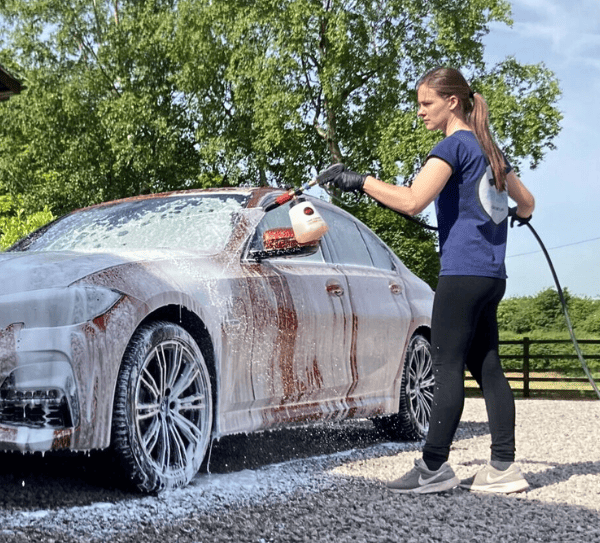If you’re in the market for some new alloy wheels then one of the main decisions you’ll need to make is whether you want to go for a multi-piece wheel, or a single piece wheel. In this guide, I’ll compare all the pros and cons of each option so you can decide which is the best choice for your car.
The Quick Answer
Multi-piece wheels are more expensive but allow you to customise the design more so than with single-piece wheels so you can get the best fitment and style. Multi-piece wheels are stronger and lighter than single-piece cast/ flow formed wheels but weaker and heavier than forged single-piece forged wheels.
Single Piece Wheels
Most aftermarket and factory alloy wheels are single-piece. One-piece wheels, are usually made by one of three main production methods: casting, flow forming and forging.
- Cast wheels: molten aluminium is poured or injected into a mold to shape the wheel. These wheels are cheaper because they are fast and inexpensive to produce. However, they are heavy and weak in comparison to the other constructions.
- Flow formed wheels: flow formed wheels are produced in the same way as cast wheels however the barrel is stretched using heat and pressure to make it thinner but also stronger than the barrel on a regular cast wheel.
- Forged wheels: a solid piece of aluminium is exposed to heat and pressure to shape the wheel. Forged wheels are light but also very strong and durable. The drawback is that they are very expensive.

Although each type of single-piece wheel (cast, flow formed and forged) has their own pros and cons, all single-piece wheels tend to share the same advantages over multi-piece wheels, they weigh and cost less. Forged single-piece wheels are the strongest type, whilst cast wheels are the least expensive and most readily available with shorter lead times.
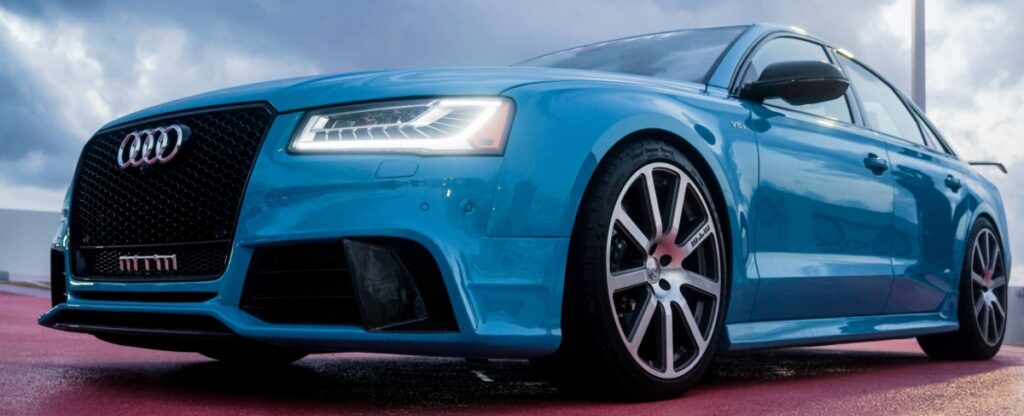
Multi-Piece Wheels
Multi-piece wheels come in either two or three pieces. Three-piece wheels consist of an outer barrel (spun lip), inner barrel and the wheel face. Two-piece wheels just have separate wheel face and barrel, which is not split into an inner and outer section.
The pieces are joined together usually using a silicone sealant and bolts which makes them quite easy to recognise compared to single-piece wheels. Some manufacturers such as Work weld the parts together to increase the strength.
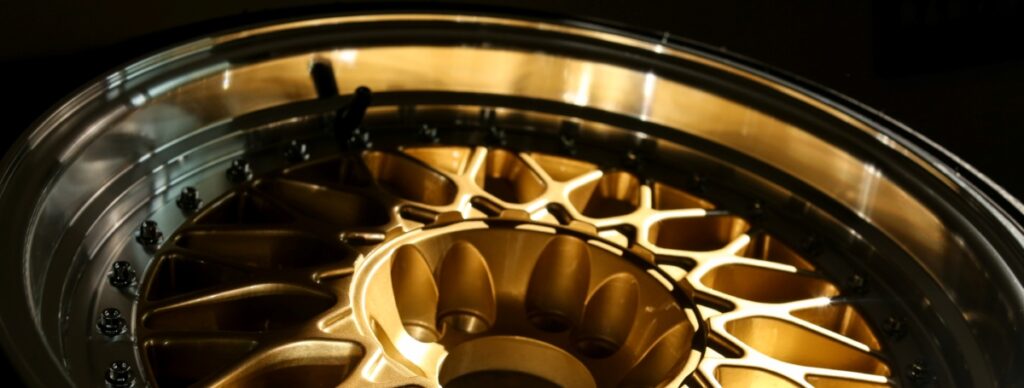
Most multi-piece wheels have a forged centre and spun barrel which means they are very strong. However, they are not as strong as single-piece forged wheels. The construction of multi-piece wheels does unfortunately add some extra weight, and they are very expensive. However, they do give you tonnes of customisability which is their main draw over their single-piece counterparts.
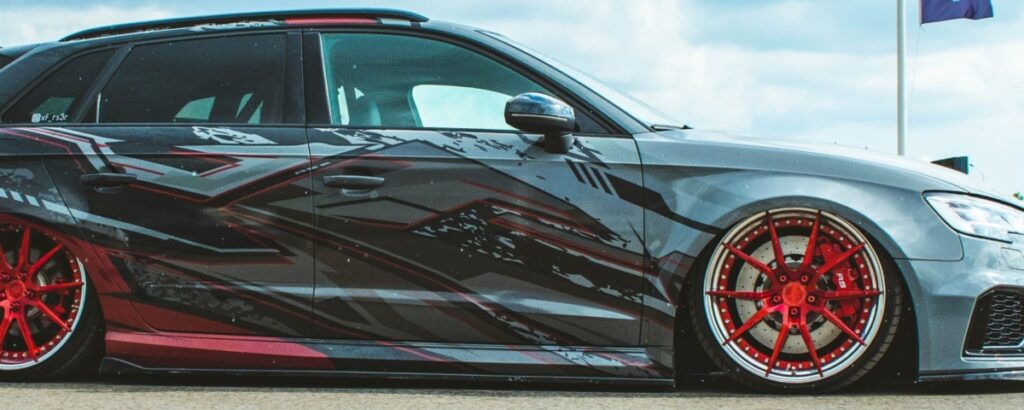
Comparing the Differences
Now we’ve been through an overview of single and multi-piece wheels, let’s directly compare them in the following categories:
- Customisability
- Repair Process
- Strength
- Weight
- Price
- Lead Time
Customisability
The main advantage of multi-piece wheels over single-piece wheels is that they are far more customisable. Multi-piece wheels are made to order which means you can choose from any type of fitment option to accommodate different offsets, widths and bolt patterns to suit the car. Hence you won’t need to use spacers with a multi-piece wheel.
As well as having complete control over the fitment, multi-piece wheels also give you a lot more flexibility in terms of their design. You can get any kind of lip for example stepped and double stepped, and any kind of spokes including floating spokes. You can also choose any color for each section of the wheel.

Repairs
There is a bit of a debate as to which type of wheel is the best option in terms of the repair process. On the one hand, multi-piece wheels are easier to repair because you often only have to repair one of the two/ three pieces. However, the lead time on a section of the wheel can be quite lengthy, meaning you’ll still have to wait a while before you can fit them back on the car.
All things considered, multi-piece wheels cause less issues in terms of repairs compare to single-piece forged wheels, but are a bit more complicated when you compare them to flow formed and cast one-piece wheels.
Strength
Since the majority of multi-piece wheels are forged, they are much stronger than single-piece flow formed and cast wheels. However, when compared to single-piece forged wheels, they aren’t quite as strong. Having said that, multi-piece and single-piece forged wheels both make a great choice for racing and are much better than cast and flow formed wheels in terms of their strength.
Weight
Forged wheels are thinner and hence lighter than flow formed and cast wheels. Hence, forged multi-piece wheels are lighter than single-piece cast and flow formed wheels. However, multi-piece wheels are slightly heavier than single-piece forged wheels due to the extra weight that comes from the construction of the overall wheel.
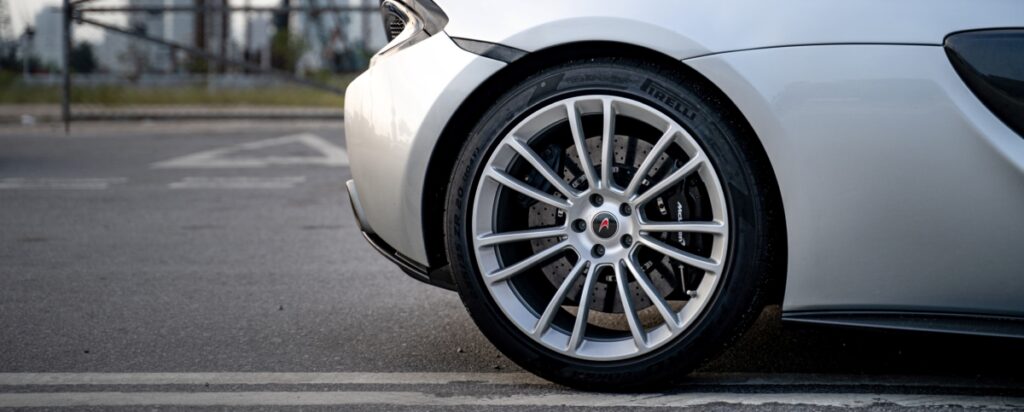
Price
Single-piece wheels are less expensive than multi-piece wheels. The difference is huge when you compare multi-piece wheels with single-piece cast and flow formed wheels. However, when comparing the price difference between forged multi-piece and single-piece wheels, the findings are less dramatic.
Lead Time
One significant drawback of multi-piece wheels is that they have a very long lead time. Often, you could be waiting several months after ordering before your new set of rims arrive. Cast and flow formed one-piece wheels have much shorter lead times since the construction process is faster.
Single-piece forged wheels often also have a length lead time varying from a few weeks to several months depending on the manufacturer, however it is still typically less than compared to multi-piece wheels.
| Type of Wheel | Average Price Range of 20×9” Wheels |
| Single-Piece Cast | $800-$2500 |
| Single-Piece Flow Formed | $1200-$3500 |
| Single-Piece Forged | $1500-$6500 |
| Multi-Piece | $6000+ |

